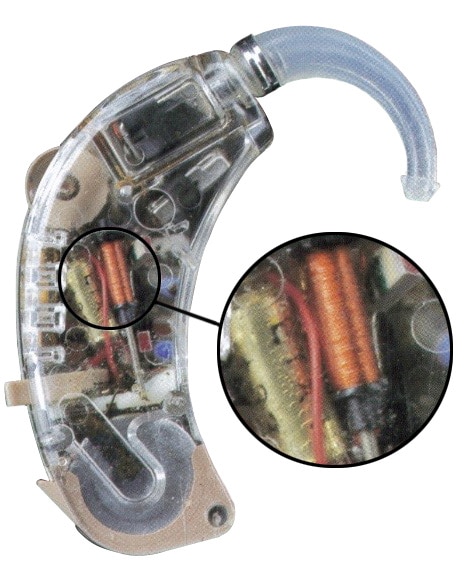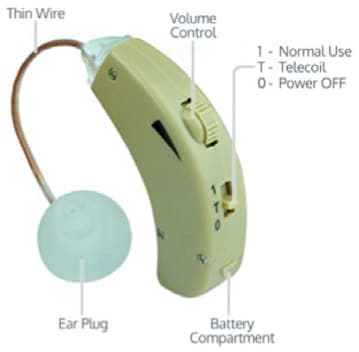Telecoil / T-coil

What is a Telecoil Loop?
- It is a very small copper coil wrapped around a metal pin or rod.
- It is built into hearing aids, cochlear implants, remote controls or gateway devices and it essentially picks up or induces the magnetic field created by the Hearing Loop System.
- View the Hearing Loss Association of America brochure on Telecoil Loops here: HLAA Telecoil Brochure
Below are images that demonstrate the size and installations of T-coils:


Why a Telecoil?
- A Telecoil or T-coil is needed in order to receive the sound from a Hearing Loop System.
- Improved communication on the telephone.
- Increased usability and benefits of the hearing instrument.
- Increased satisfaction of the hearing instrument user.
What Hearing Instruments Have a Telecoil
- All newer Cochlear implants.
- Most behind-the-ear model style T-coil hearing aids.
- Many custom in-ear hearing aids.
- In 2014, the Consumer’s Guide to Hearing Aids reported that 323 of 415 hearing aid models (71.5%) were now coming with Telecoils, as were 81% of models larger than the miniaturized completely-in-the-canal aid.
- 2014 Consumers Guide to Hearing Aids – (click here to open/download Guide)
- Leading manufacturers like Phonak and Widex, as a matter of policy, install Telecoils in ALL hearing aids in which the coil will fit. This does not require a special order or reference by the ordering audiologist.
Cost of Telecoil
- New Hearing Aid – if a Telecoil is installed in a hearing aid when it is manufactured, it does not cost the hearing aid user anything – $0 – in most cases. Occasionally an audiologist or hearing aid specialist will assess a fee but it should be nominal.
- Retrofit – sometimes older model hearing aids do not have a Telecoil. If the instrument is large enough to accommodate a Telecoil, it may be able to be retrofitted for one. This means the instrument is sent back to the manufacturing lab by a hearing professional. The lab takes the instrument apart, inserts the Telecoil, and sends it back to the hearing professional. It then needs to be programmed and returned to the user. For this process, there is a cost associated. Typically the manufacturer charges anywhere from $50 per instrument to a few hundred dollars per instrument. The hearing professional then may add on additional fees for the programming. The total should not be more than a few hundred dollars per ear however.
Other names for Telecoil
- Tcoil
- T-coil
- T switch
